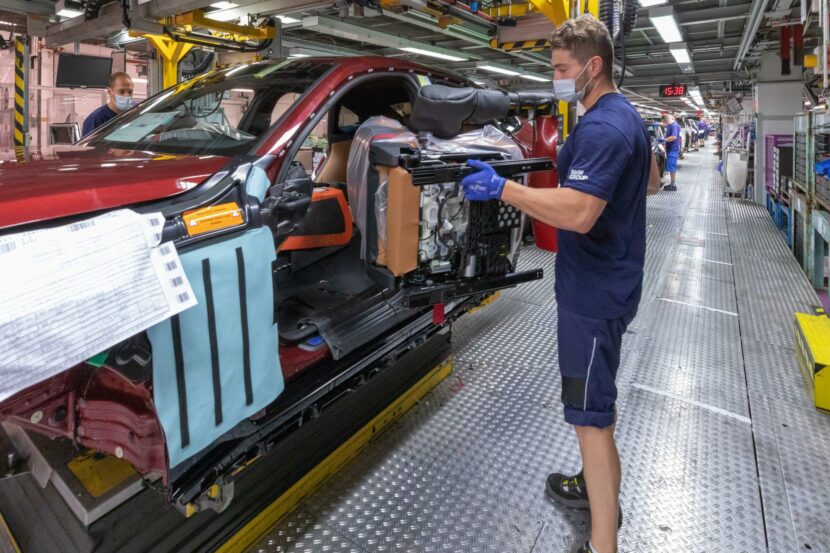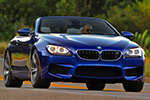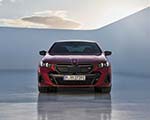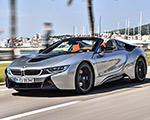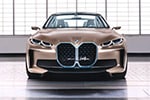BMW brought a small group of journalists to Santa Monica to mark the 50th anniversary of Designworks’ presence in the United States, and the highlight of the day was a roundtable with Adrian van Hooydonk, Senior Vice President of BMW Group Design, and Julia de Bono, CEO of Designworks. The conversation touched a wide range of topics, from the upcoming Neue Klasse products to the pressure to adapt to digital life inside the car, and how new tools—especially AI—are reshaping their workflows. There was also a short Q&A which allowed media to ask other questions as well.
The Digital World Inside The Cabin
One of the first subjects raised was the increasing digitization of BMW interiors. With the upcoming iX3 and the broader Neue Klasse family moving toward a cleaner, more software-driven layout, there has been speculation that BMW might eventually eliminate physical buttons altogether. Van Hooydonk shut that down early.
“The car is not completely switchless,” he said, explaining that BMW deliberately avoided a fully screen-only cockpit. “We didn’t go completely radical. There are still switches in the center console.” He described how BMW analyzed the controls customers reach for most often and designed the interior around those recurring habits. Some of those controls remain physical by necessity, while others appear as fixed digital elements that never move within the interface. De Bono added that this is consistent with all the industries Designworks serves, from aviation to farming equipment. “For any human-centric design, something haptic—something that engages all senses—will always remain,” she said, emphasizing that tactility is not a nostalgic idea but an ergonomic one.
A Smartphone-Like Experience?
The tension between digital familiarity and safe driving is something BMW has been wrestling with for years, especially as consumer behavior becomes increasingly shaped by smartphones. Van Hooydonk said that the design team has spent a long time examining whether a car’s interface should behave more like a phone or maintain its own logic.
“Car companies come from a mechanical world,” he explained. “Tech companies come from touch and voice. Five years ago the question was: which logic should win?” The answer eventually took shape in the Panoramic Vision Display of the Neue Klasse. Rather than turning the dashboard into a giant tablet, BMW split the digital environment into two zones—critical driving information directly in front of the driver, and customizable widgets positioned farther to the right. “In the iX3, customers can configure apps like on a mobile device,” he said, “but the driving environment still works for you.” The goal was to acknowledge how people interact with technology today without surrendering the clarity needed in a moving vehicle.
The Future of Apple Car Play and Android Auto
That naturally led to a question about Apple CarPlay and Android Auto, especially as some automakers have recently moved away from supporting them. Van Hooydonk was direct: BMW isn’t abandoning CarPlay. “We offer CarPlay,” he said. “We want customers to use it if they want. Half our customers have an iPhone.”
However, he also made it clear that BMW wants its own system to remain the better choice for understanding the car’s capabilities, particularly when it comes to electric vehicles. “Our UI will always be more connected to the car,” he explained. “An electric BMW knows your charge state and your next charging point, and it guides you seamlessly.” The message wasn’t about competition with Apple so much as the reality that the car must understand things a phone cannot.
AI’s Role in Car Design
The topic that generated the most discussion, and the most honest introspection, was artificial intelligence. BMW has already been experimenting with AI inside its design studios for more than two years, though not in the consumer-facing way most people might imagine. Van Hooydonk made it clear that BMW isn’t relying on public generative tools to shape its products.
“We don’t want ChatGPT to design our next BMW,” he said. “It would grab images from the internet and mix them together. We are training our own AI.” De Bono explained how Designworks trained its internal models on the sketch styles of BMW designers, a process that took close to a year before the system could convincingly reflect the way individual designers express themselves.
“It took nine to twelve months for the AI to really express how our designers express themselves,” she said. “Now I can look at sketches and say, ‘That’s Hane. That’s Art.’”
This shift is changing how designers collaborate. People who may not traditionally sketch full vehicles, such as color and materials specialists, can now generate complete concept proposals. Designers can jump into animated 3D scenes much earlier in the process, allowing them to judge proportions, movement, and presence in a more immersive way. Van Hooydonk noted that this kind of tool, once properly integrated, could take a fraction of the time that older digital modeling workflows required. “It took us 15 years to integrate early modeling tools,” he said. “AI will take three or four.”
Shorter Development Cycles for Cars?
When asked whether AI will ultimately shorten vehicle development cycles, van Hooydonk offered a grounded answer. While design itself can move faster, the bulk of a vehicle’s timeline—and cost—comes from engineering and industrialization. “We can design a car quickly already,” he said. “The expensive part is after design.” What he does expect is that AI will speed up many of the engineering tasks that often slow projects down, such as checking stamping feasibility or determining how difficult it will be to manufacture a particular shape.
“AI could analyze a shape and tell you how difficult it is to manufacture,” he said. “That’s where we’ll see gains.”
BMW Not Interested in Retro Design
The conversation also touched on whether BMW might revisit ideas from past concept cars. Van Hooydonk didn’t show much interest in retracing old design work. “I like to look forward,” he said. “Why go back?” Still, he acknowledged that the Neue Klasse intentionally contains subtle references to BMW’s heritage, not as retro styling, but as a way to maintain continuity during a major shift in technology and user experience. “We’re introducing big changes with the core of our brand,” he said. “We want current customers to come along.”
Designing for Individual Markets, or Global Audiences?
Because the event took place in Los Angeles, the discussion eventually turned to U.S. market trends and how they differ from Europe or Asia. De Bono described LA’s car culture as unusually expressive, pointing to the large number of wrapped cars, bold colors, and heavily personalized vehicles on local roads. She noted that size also remains a strong preference in the U.S., which aligns with what BMW sees in customer behavior.
“LA car culture is vivid and authentic,” she said. “You see extreme designs, bold colors, wraps everywhere. Big size is valued here.” She also highlighted the relevance of semi-automated driving in the region’s heavy traffic, saying, “Level 2+ makes LA traffic relaxing. The more we can hand over in traffic situations, the better.”
Van Hooydonk added that BMW’s teams are exploring product categories the brand hasn’t traditionally played in, with some ideas already in development. “We found things worth developing,” he said. “That’s all I can say for now.”
The roundtable didn’t end with a big announcement, but with a clearer sense of how BMW’s designers are approaching the next few years. The tools are evolving, the workflows are changing, and the products will reflect that, but the overall attitude remained measured. It was an honest look at a team adjusting to new realities without discarding the fundamentals that have guided them so far.



























